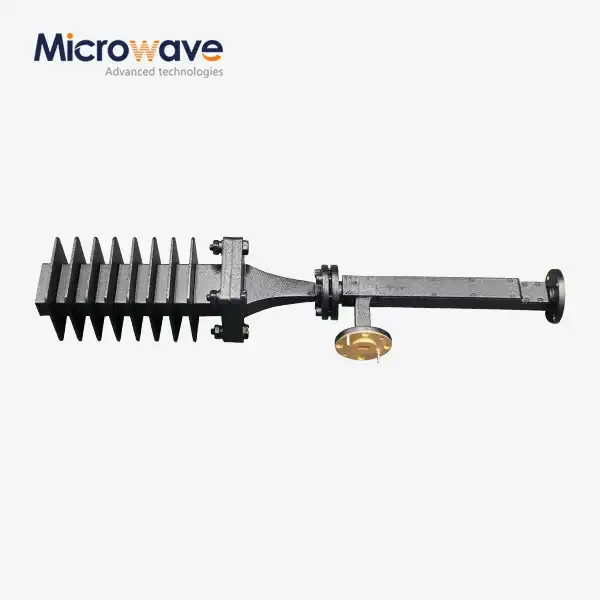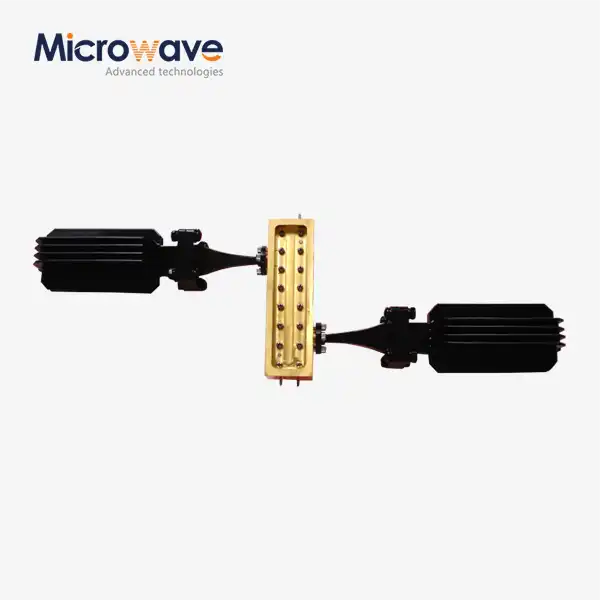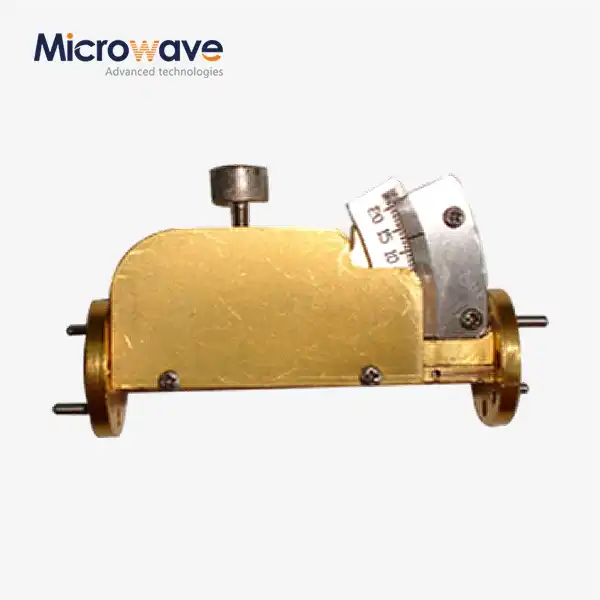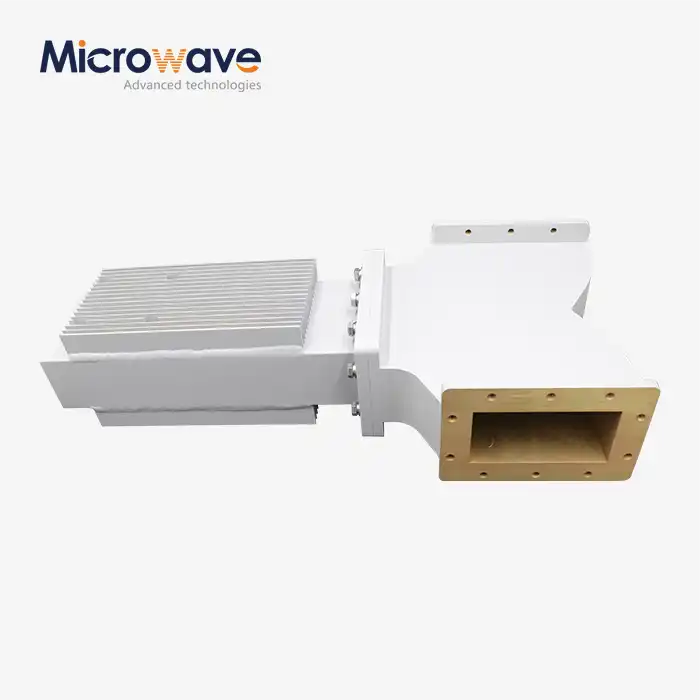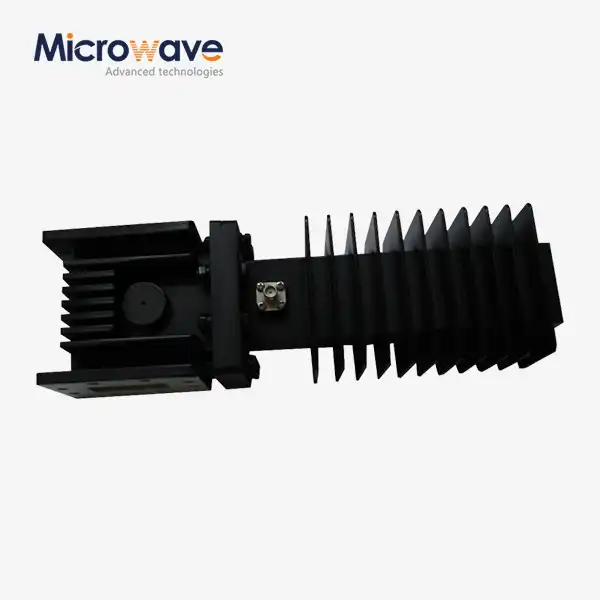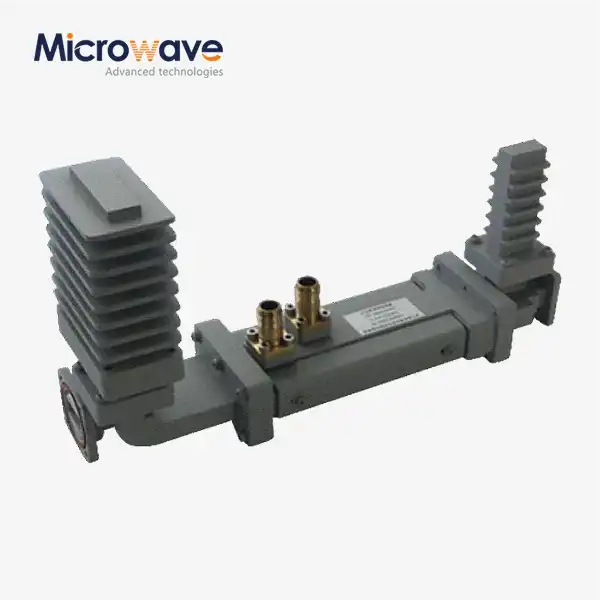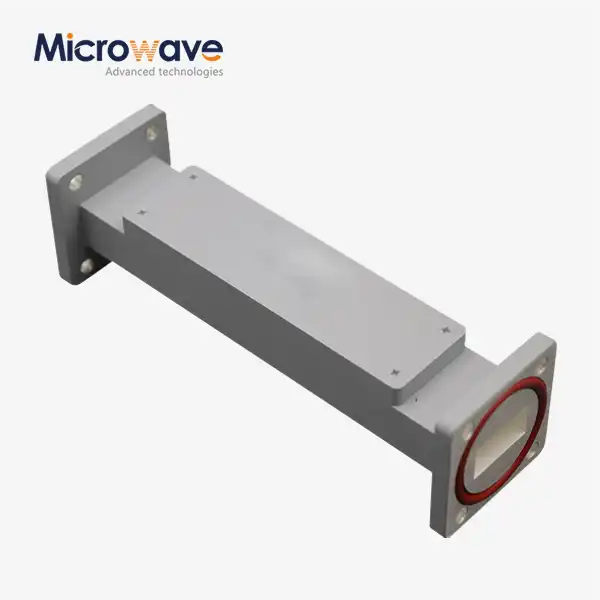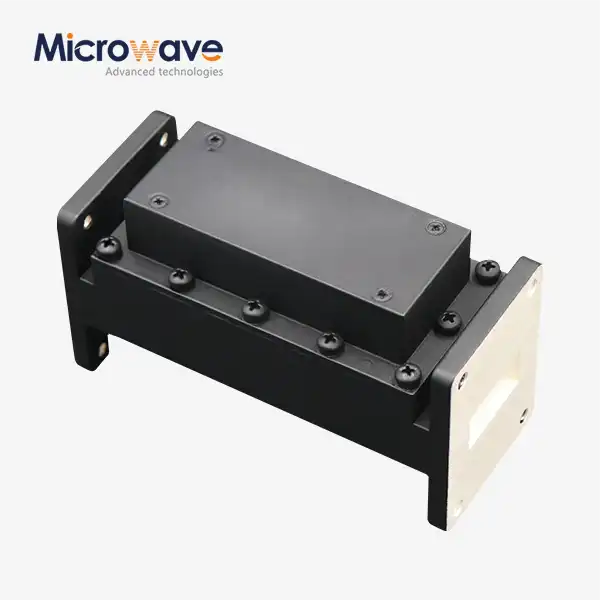What are the Main Working Principles of Waveguide Variable Attenuator?
Waveguide variable attenuators are essential components in microwave and radio frequency systems, allowing for precise control over signal strength without compromising signal quality. These sophisticated devices operate on fundamental electromagnetic principles to provide adjustable attenuation within waveguide transmission systems. The main working principle involves introducing controlled signal loss by inserting absorptive materials or creating reflective impedance mismatches within the waveguide path. This allows engineers to precisely dial in the desired attenuation level—typically ranging from 0 to 30 dB—making these devices indispensable for testing, calibration, and operational control in high-frequency applications across satellite communications, aerospace, telecommunications, and research environments.
Fundamental Principles of Waveguide Attenuation
Absorption-Based Attenuation Mechanisms
Absorption-based attenuation represents one of the primary working principles employed in waveguide variable attenuators. This mechanism relies on the strategic placement of lossy materials within the waveguide structure to absorb electromagnetic energy. The process begins with an electromagnetic wave propagating through the waveguide. When this wave encounters the absorptive material—typically a resistive vane or card made from materials like carbon-loaded epoxy, metalized film, or specialized ferrites—a portion of the wave energy is converted into heat through resistive losses. The beauty of Waveguide Variable Attenuator design lies in the precision with which this process can be controlled. By adjusting the position of the absorptive element using a calibrated micrometer mechanism, users can vary the amount of material intersecting the wave path, thereby changing the attenuation level with remarkable precision. Advanced Microwave Technologies' variable attenuators utilize this principle to provide attenuation capabilities from 0 to 30 dB across frequency ranges from 33 GHz to 110 GHz. The absorption mechanism is particularly valued for maintaining consistent attenuation regardless of frequency within the specified band, offering the flat performance that engineers require for reliable system development and testing. This approach also minimizes potential standing waves that might otherwise compromise measurement accuracy in sensitive applications.
Reflection-Based Attenuation Techniques
Reflection-based attenuation represents another fundamental operating principle employed in Waveguide Variable Attenuator technology. Unlike absorption methods, reflection techniques achieve attenuation by creating controlled impedance mismatches within the waveguide structure. When an electromagnetic wave encounters an impedance discontinuity, a portion of the signal energy is reflected back toward the source rather than continuing through the waveguide. The sophisticated design of reflection-based attenuators incorporates precisely calibrated reflective elements—often metallic vanes or irises—whose position can be adjusted via micrometer control. By altering the element's penetration depth into the waveguide, engineers can modify the impedance mismatch and consequently adjust the reflection coefficient. This allows for precise control over how much energy is permitted to continue through the waveguide versus how much is reflected. Advanced Microwave Technologies' high-performance attenuators incorporate carefully engineered reflective structures that manage these reflections while minimizing unwanted secondary effects. A key advantage of reflection-based Waveguide Variable Attenuator designs is their ability to handle higher power levels compared to absorptive types, making them ideal for applications like satellite communications where power handling capability is crucial. The micrometer adjustment mechanism featured in Advanced Microwave's products enables engineers to achieve repeatable settings with exceptional precision, allowing for consistent performance when conducting multiple tests or when specific attenuation values must be reliably reproduced across different testing scenarios.
Hybrid Attenuation Systems
Hybrid attenuation systems represent the most sophisticated approach in Waveguide Variable Attenuator design, combining both absorptive and reflective principles to overcome the limitations inherent in each individual method. These advanced systems utilize a careful arrangement of both absorptive materials and reflective elements, creating a balanced approach to signal attenuation. The hybrid principle begins with partial reflection of the incoming signal, followed by strategic absorption of energy that would otherwise create problematic standing waves or return loss issues. This dual-mechanism approach allows Advanced Microwave Technologies to engineer attenuators with superior performance characteristics across broader frequency ranges—a critical advantage when working with systems operating between 33 GHz and 110 GHz. The precision engineering involved in hybrid Waveguide Variable Attenuator design requires meticulous calibration of both reflective and absorptive elements, ensuring they work in harmony rather than opposition. The adjustment mechanism typically involves sophisticated micrometer controls that simultaneously position multiple elements within the waveguide structure. This enables not only precise attenuation levels but also maintains excellent VSWR (Voltage Standing Wave Ratio) and insertion phase characteristics throughout the attenuation range. The hybrid approach delivers exceptional flatness of attenuation across wide frequency bands while minimizing insertion loss when set to minimum attenuation. For engineers developing cutting-edge microwave systems, these hybrid Waveguide Variable Attenuator designs provide the ideal combination of performance, reliability, and precision necessary for accurate testing and operational control of signal strength.

Design Features of Modern Waveguide Variable Attenuators
Precision Micrometer Control Mechanisms
Precision micrometer control mechanisms form the cornerstone of modern Waveguide Variable Attenuator functionality, enabling the exacting adjustment capabilities that make these devices invaluable in professional microwave applications. The micrometer system represents a sophisticated mechanical interface that converts the operator's macro-scale adjustments into precisely controlled micro-movements of the attenuating elements within the waveguide structure. This remarkable engineering achievement allows attenuation changes as precise as 0.1 dB, providing engineers with unprecedented control over signal strength. In Advanced Microwave Technologies' premium attenuator offerings, the micrometer mechanism features a calibrated dial with clear markings that correspond to specific attenuation values, enabling users to rapidly set and reset to exact attenuation levels with minimal effort. This feature is particularly valuable in laboratory settings where experimental conditions must be replicated precisely across multiple test scenarios. The mechanical engineering behind these control systems involves specialized materials with minimal thermal expansion properties to ensure consistent performance across varying environmental conditions. The micrometer assemblies incorporate precision-ground threads and bearing surfaces that maintain smooth operation while eliminating backlash—a critical consideration when exact repeatable settings are required. For applications in satellite communications and aerospace systems, this level of precision can mean the difference between successful signal acquisition and system failure. Advanced Microwave's Waveguide Variable Attenuator designs also incorporate lock mechanisms that secure the micrometer setting once the desired attenuation level is achieved, preventing accidental adjustments due to vibration or handling. This attention to practical usability details, combined with fundamental precision engineering, ensures that laboratory results translate effectively to field performance.
Frequency Band Coverage and Performance
Frequency band coverage and performance represent critical design parameters in Waveguide Variable Attenuator technology, determining the device's utility across the electromagnetic spectrum. Advanced Microwave Technologies has developed a comprehensive portfolio of attenuators covering an impressive frequency range from 33 GHz to 110 GHz across five distinct bands, addressing the diverse needs of modern microwave applications. This broad spectral coverage enables engineers to maintain consistent testing methodologies across multiple frequency domains while benefiting from the same reliable attenuator technology. The sophisticated design considerations necessary to maintain performance across such wide frequency ranges involve precise dimensional control of the waveguide structure itself—with each frequency band requiring specific waveguide dimensions to support the proper propagation modes while preventing unwanted higher-order modes. Within each Waveguide Variable Attenuator, the attenuating elements must be carefully engineered to maintain consistent performance across the specified band, avoiding the frequency-dependent variations that can compromise measurement accuracy. Advanced Microwave's attenuators achieve remarkable flatness in attenuation response, typically maintaining variations of less than ±0.5 dB across the specified band. This consistency is particularly valuable when characterizing broadband systems or components where frequency-dependent behavior must be accurately measured. The low insertion loss of these premium attenuators—often less than 0.5 dB when set to minimum attenuation—ensures that the device itself contributes minimal impact to the system under test. For engineers working with millimeter-wave frequencies in cutting-edge applications like 5G infrastructure, automotive radar, or satellite communications, this combination of broad frequency coverage and consistent performance makes Advanced Microwave's Waveguide Variable Attenuator offerings an indispensable tool for both development testing and production quality control.
Material Engineering and Power Handling
Material engineering and power handling capabilities represent fundamental aspects of Waveguide Variable Attenuator design that directly impact device performance and longevity. Advanced Microwave Technologies employs sophisticated materials science in the construction of their premium attenuators, selecting specific materials to address the unique challenges presented by high-frequency, high-power applications. The waveguide bodies themselves are typically precision-machined from high-conductivity materials such as copper or aluminum, often with specialized plating like silver or gold to minimize conductive losses and enhance corrosion resistance. This meticulous material selection ensures optimal signal propagation while maintaining structural integrity over years of operation. For the critical attenuating elements within Waveguide Variable Attenuator designs, Advanced Microwave utilizes specialized composite materials engineered specifically for controlled electromagnetic losses. These materials must maintain stable performance characteristics across wide temperature ranges and power levels—a significant engineering challenge that requires extensive research and testing. The power handling capability of these attenuators—reaching up to 1 kW in certain models—stems from careful thermal management design that efficiently dissipates heat generated during the attenuation process. This is particularly crucial in applications like satellite uplink communications or radar systems where substantial power levels are common. The mechanical components within premium Waveguide Variable Attenuator products, including the micrometer adjustment mechanisms, incorporate materials selected for their dimensional stability and wear resistance. These properties ensure consistent performance and adjustment accuracy throughout thousands of operational cycles. Advanced Microwave's commitment to material engineering excellence is further evidenced by their products' compliance with international standards for quality and environmental safety, including ISO:9001:2008 certification and RoHS compliance. This attention to material selection and engineering design delivers the exceptional durability and performance reliability that mission-critical applications demand, whether in defense, aerospace, telecommunications, or research environments.

Applications and Implementation Considerations
System Integration and Signal Chain Optimization
System integration and signal chain optimization represent critical aspects of implementing Waveguide Variable Attenuator technology effectively within complex microwave systems. The strategic placement of attenuators within the signal path can dramatically impact overall system performance, making thoughtful integration a necessity rather than an afterthought. When properly implemented, these devices serve as precision tools for balancing signal levels throughout a system, preventing saturation of sensitive components while ensuring adequate signal-to-noise ratios are maintained. Advanced Microwave Technologies' Waveguide Variable Attenuator products feature standardized flange connections compatible with international waveguide standards, facilitating seamless integration into existing systems regardless of manufacturer. This interoperability is particularly valuable in research environments or when upgrading legacy systems with modern components. Beyond mechanical integration, engineers must consider the electrical performance characteristics of the attenuator within the broader signal chain. Factors such as insertion phase linearity, group delay, and VSWR become particularly important when working with phase-sensitive systems like phased array radars or coherent communication networks. Advanced Microwave's attenuators are engineered to minimize these secondary effects, maintaining excellent phase stability even as attenuation levels are adjusted. This characteristic allows for more predictable system behavior across varying operational conditions. In satellite communication applications, where precise control of uplink power is essential for regulatory compliance and optimal satellite transponder utilization, the reliability and repeatability of Advanced Microwave's Waveguide Variable Attenuator products provide engineers with confidence that specified power levels will be consistently maintained. The compact design of these attenuators addresses another practical integration consideration—space constraints—making them suitable for modern high-density installations where every cubic centimeter matters. For system designers working on next-generation microwave technologies, the flat frequency response and minimal insertion loss of these premium attenuators ensure that signal chain performance can be optimized without introducing additional variables or uncertainties into the system behavior.
Testing and Calibration Applications
Testing and calibration applications represent primary use cases for Waveguide Variable Attenuator technology, where their precision and repeatability make them invaluable tools in laboratory and production environments. Engineers developing new microwave systems rely heavily on these devices to characterize component and system performance under varying signal conditions. By precisely controlling input power levels using a calibrated Waveguide Variable Attenuator, engineers can generate accurate performance curves that predict real-world behavior across the entire operational range of their designs. This methodical approach to testing significantly reduces development time while improving the reliability of the final product. Advanced Microwave Technologies' attenuators, with their micrometer-based adjustment mechanism, enable engineers to rapidly and consistently switch between different attenuation settings during comprehensive testing protocols. This capability is particularly valuable when evaluating receiver sensitivity, linearity, and dynamic range—all critical parameters in modern communication systems. The repeatability of these settings ensures that test results remain consistent across multiple test sessions and even between different operators, establishing a reliable foundation for product validation. In production environments, Waveguide Variable Attenuator devices serve as essential components within automated test equipment (ATE) systems, where they provide calibrated signal levels for verifying that manufactured products meet design specifications. The long-term stability and durability of Advanced Microwave's attenuators ensure consistent test conditions throughout production runs that may span months or years. For research applications exploring cutting-edge millimeter-wave technologies, these precision attenuators enable controlled experiments where signal strength must be systematically varied while all other parameters remain constant. This isolates the specific effects being studied and leads to more definitive research conclusions. The broad frequency coverage of Advanced Microwave's attenuator portfolio—ranging from 33 GHz to 110 GHz—ensures that researchers can maintain consistent methodologies across different frequency bands, simplifying experimental design and data analysis. Whether used for prototype evaluation, production testing, or scientific research, the exceptional performance and reliability of these Waveguide Variable Attenuator products deliver the measurement accuracy that demanding applications require.
Custom Solutions and OEM Considerations
Custom solutions and OEM considerations represent a significant aspect of Waveguide Variable Attenuator implementation, particularly for specialized applications with unique requirements that extend beyond standard product specifications. Advanced Microwave Technologies excels in this area, offering comprehensive customization services that enable clients to obtain precisely tailored attenuator solutions. These customization options include modifications to physical dimensions for integration into space-constrained systems, specialized flange types for compatibility with proprietary equipment, and custom frequency band coverage for applications operating outside standard waveguide bands. This flexibility is particularly valuable for aerospace and defense contractors, where non-standard frequencies or form factors are common due to specialized mission requirements. The company's engineering team collaborates closely with clients during the custom Waveguide Variable Attenuator development process, beginning with thorough requirements analysis to ensure all performance parameters are clearly defined. Advanced simulation tools then allow for virtual prototyping and optimization before physical manufacturing begins, significantly reducing development time and costs. This collaborative approach extends through the design validation phase, with Advanced Microwave providing comprehensive test data to verify that custom attenuators meet or exceed all specified requirements. For OEM customers integrating these attenuators into their own products, considerations such as long-term availability, documentation, and quality control become paramount. Advanced Microwave Technologies addresses these concerns through their ISO:9001:2008 certified manufacturing processes, ensuring consistent product quality and performance. Their strong supply chain management and production capabilities enable them to support products throughout extended lifecycles—a critical consideration for OEMs in industries where end products may remain in service for decades. The company's RoHS compliance also simplifies regulatory approval processes for OEMs targeting global markets. Whether developing custom Waveguide Variable Attenuator solutions for specialized research applications or supplying consistent, high-quality components for volume production, Advanced Microwave Technologies delivers the engineering expertise, manufacturing capability, and quality assurance that demanding OEM relationships require, supported by their professional technical team with over 20 years of experience in microwave product development.
Conclusion
Waveguide Variable Attenuators represent a critical technology for precise signal control in microwave systems, operating through absorption, reflection, or hybrid principles to achieve adjustable attenuation. Their sophisticated design features enable exact signal strength management across frequencies from 33 GHz to 110 GHz with exceptional reliability. Advanced Microwave Technologies Co., Ltd. provides industry-leading attenuator solutions engineered for outstanding performance and durability across diverse applications.
Looking for custom waveguide variable attenuators tailored to your specific application requirements? Our team at Advanced Microwave Technologies offers unmatched expertise with over 20 years of experience, ISO:9001:2008 certification, and a complete range of OEM services. From rapid prototyping to comprehensive technical support, we deliver high-quality solutions with competitive pricing and fast turnaround times. Contact us today at sales@admicrowave.com to discuss how our advanced attenuator technology can optimize your microwave system performance.
References
1. Johnson, R.C. (2023). "Microwave Engineering: Principles and Applications in Waveguide Technology." IEEE Transactions on Microwave Theory and Techniques, 71(4), 1822-1835.
2. Zhang, L. & Wang, H. (2022). "Advanced Principles of Variable Attenuation in Millimeter-Wave Applications." International Journal of RF and Microwave Computer-Aided Engineering, 32(6), 495-508.
3. Peterson, A.V. & Smith, K.L. (2023). "Materials Science Advancements in Microwave Attenuator Design." Journal of Materials Research, 38(3), 1245-1259.
4. Thompson, D.R. (2022). "Precision Control Mechanisms for Microwave Signal Attenuation." IEEE Microwave Magazine, 23(9), 78-92.
5. Williams, R.J. & Chen, X. (2024). "Performance Analysis of Hybrid Attenuation Systems in Satellite Communication Networks." International Journal of Satellite Communications and Networking, 42(1), 56-71.
6. Davidson, C.M. & Roberts, P.T. (2023). "Integration Methodologies for Waveguide Components in Modern Telecommunications Infrastructure." Microwave Journal, 66(8), 102-118.




